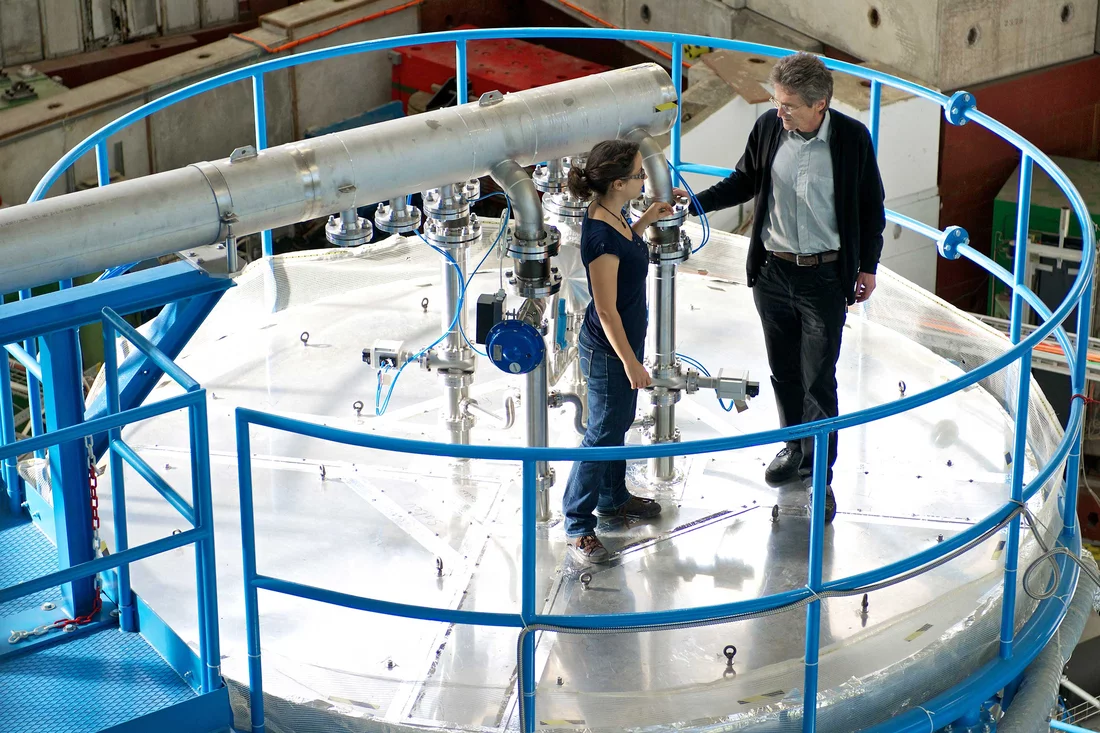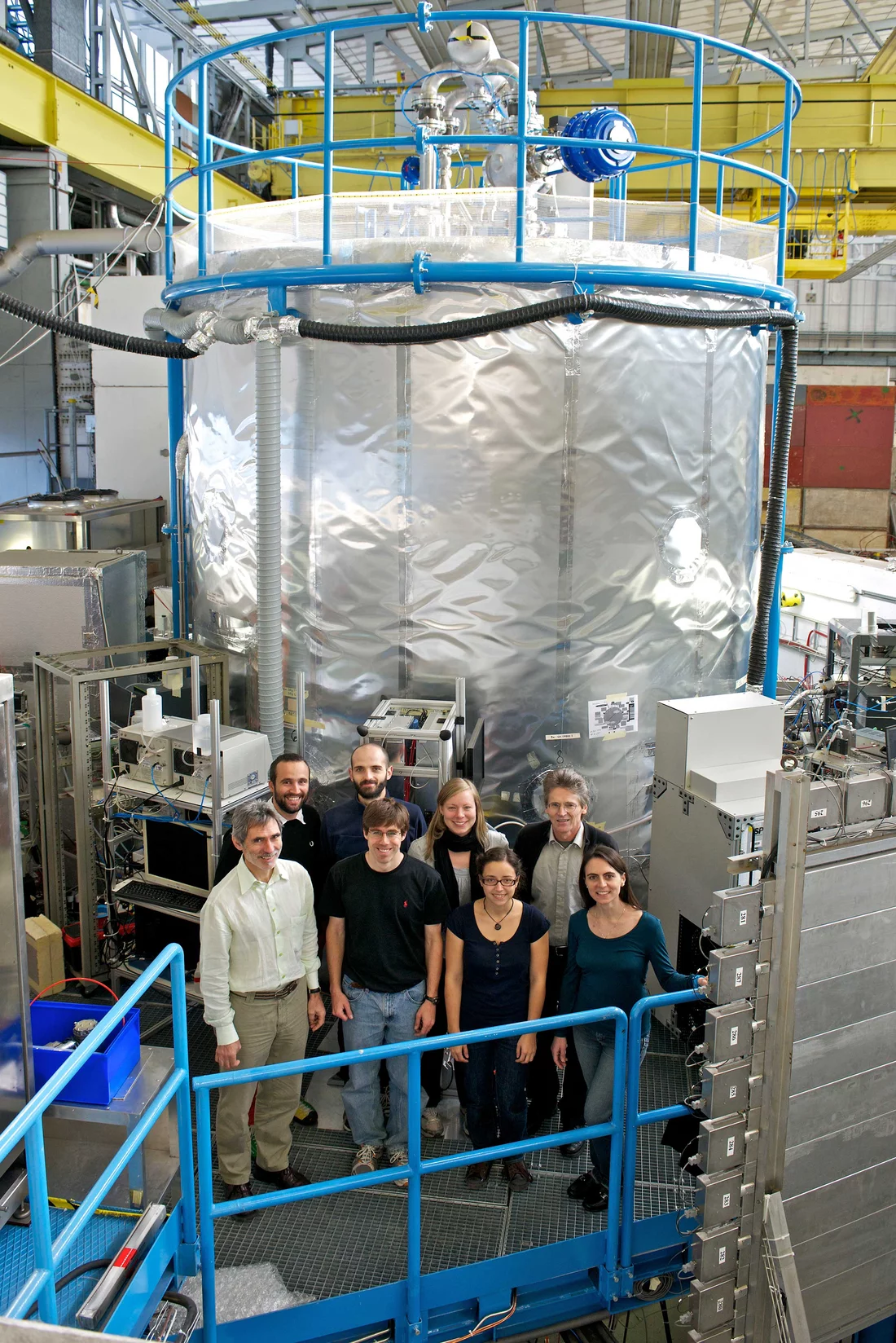Clouds consist of tiny droplets. These droplets form when water condenses around so-called aerosols – small particles in the atmosphere. How in turn aerosols come into existence is hence vital for understanding cloud brightness and thus climate and climate change. In a research collaboration with participants at the University of Leeds, at CERN, at the Paul Scherrer Institute PSI and numerous other scientific institutions around the world, scientists have now created a comprehensive computer model simulation based on profound experimental data. This simulation revealed that in addition to sulphuric acid, two other substances are crucially involved in the formation of aerosols: organic compounds and ammonia. These results have now been published in the renowned journal Science.
For the first time, scientists have been able to create a computer model simulation of atmospheric particle formation which is based entirely on experimental data. These experiments were conducted throughout many years in a sophisticated laboratory: the specially designed CLOUD chamber of CERN.
The thus substantiated simulations reveal that atmospheric particles – so called aerosols – originate from clusters of molecules containing sulphuric acid, organic compounds, and ammonia. Whilst sulphuric acid has already been recognised for some time as an important contributor for the nucleation process which leads to aerosol particles, the new results show that organic compounds and ammonia are equally significant.
It’s not just sulphuric acid: organic compounds and ammonia are also vital for nucleation – we can no longer ignore their contribution
, says Urs Baltensperger, Head of the Laboratory for Atmospheric Chemistry at the Paul Scherrer Institute PSI and co-author of the new study.
While the ground-breaking computer simulation was led by scientists of the University of Leeds, scientists at PSI were decisively involved in the CLOUD measurements which were the foundation for this simulation. PSI scientists initiated that organic compounds were included in the measurements. Right from the beginning, we were certain that organic compounds were of great importance and hence urged this part of the joint project
, recalls Baltensperger.
Baltensperger and his coworkers at PSI also contributed to the measurements of ammonia by developing a method which allowed determining ammonia concentrations far below the previous detection limit. This proved to be of great importance: Our newest results show that ammonia concentrations which previously could not even be detected increase the nucleation rate significantly compared to sulfuric acid alone – under certain circumstances by a factor of up to 100!
Another insight that was achieved with the new computer model simulation is that ionisation of the atmosphere by cosmic rays accounts for nearly one-third of all aerosol particles formed. However, the simulations show that small changes in cosmic rays do not affect aerosols enough to influence today’s climate significantly.
The CLOUD experiment
The CLOUD experiment at CERN is tackling one of the most challenging and long-standing problems in atmospheric science: to understand how new particles are formed in the atmosphere and the effect these particles have on climate. Air pollution increases the concentration of aerosol particles in the atmosphere, which leads to the formation of additional cloud droplets and thus in turn to a cooling effect on climate by making clouds brighter. This brightening of earth’s clouds by aerosol particles leads to a higher reflection of the sun’s irradiation back to space and is thought to have offset a large part of the warming caused by man-made emissions of greenhouse gases.
The main aim of the CLOUD experiment is to understand how new particles are formed in the atmosphere through a process called nucleation
. Nucleation occurs when certain molecules in the atmosphere cluster together and grow to form new particles. Nucleation is important because, by current estimates, about half of all cloud droplets are formed on aerosol particles that were created in this way.
CLOUD measures the nucleation of new atmospheric particles in a specially designed chamber under extremely well controlled environmental conditions and concentrations of nucleating gases. CLOUD uses state of the art instruments to track particle formation from the very first molecular clusters up to particles of about a hundred nanometres in diameter that can go on to form cloud droplets. The CLOUD chamber has very low concentrations of contaminants, which allows us to measure the nucleation due to controlled amounts of selected gases without the complicating effect of undetected gases. Another unique aspect is the capability to measure the effects of electrically charged molecules formed by cosmic rays.
CLOUD advances our understanding of aerosol particles in the atmosphere
For over thirty years scientists have been able to build computer model simulations of the atmosphere’s chemistry based on measurements of chemical reaction rates made in a laboratory. This capability has been essential to the development of our understanding of the atmosphere, such as predicting the formation of air pollution and the destruction of the ozone layer. The same level of understanding has not been possible for aerosol particles in the atmosphere because of the enormous challenges involved in reliably measuring particle formation in a laboratory.
Text: Based on a release from the University of Leeds, with additions from the Paul Scherrer Institute
About PSI
The Paul Scherrer Institute PSI develops, builds and operates large, complex research facilities and makes them available to the national and international research community. The institute's own key research priorities are in the fields of matter and materials, energy and environment and human health. PSI is committed to the training of future generations. Therefore about one quarter of our staff are post-docs, post-graduates or apprentices. Altogether PSI employs 2000 people, thus being the largest research institute in Switzerland. The annual budget amounts to approximately CHF 370 million. PSI is part of the ETH Domain, with the other members being the two Swiss Federal Institutes of Technology, ETH Zurich and EPFL Lausanne, as well as Eawag (Swiss Federal Institute of Aquatic Science and Technology), Empa (Swiss Federal Laboratories for Materials Science and Technology) and WSL (Swiss Federal Institute for Forest, Snow and Landscape Research).
(Last updated in May 2016)
Additional information
http://psi.ch/3mqd – Present-day measurements yield insights into clouds of the pastContact
Prof. Dr. Urs Baltensperger, Head of the Laboratory for Atmospheric Chemistry,Paul Scherrer Institute, 5232 Villigen PSI, Switzerland
Telephone: +41 56 310 24 08, mobile: +41 79 679 65 34, e-mail: urs.baltensperger@psi.ch [German, English]
Original Publication
Global atmospheric particle formation from CERN CLOUD measurementsE. M. Dunne et al.
Science 27 October 2016
DOI: 10.1126/science.aaf2649


